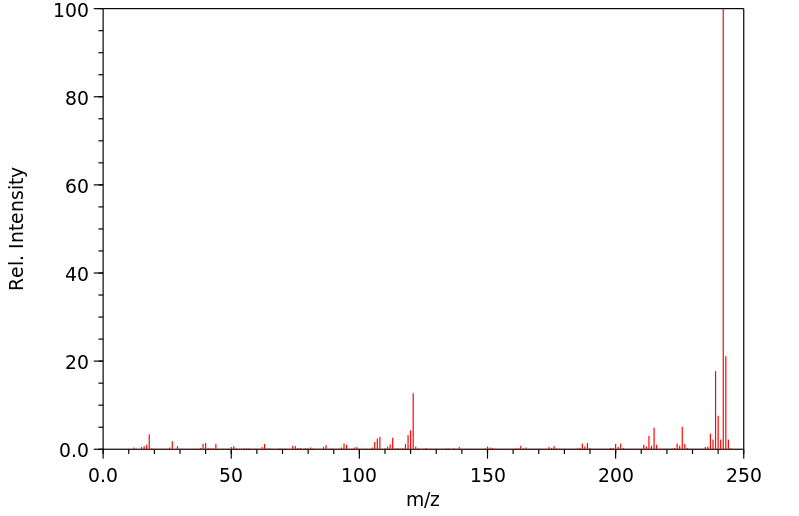代谢
8-甲基苯[a]蒽 (8-MeBaA) 的反式二氢二醇代谢物通过反向相和正相高效液相色谱法从8-MeBaA与肝脏微粒体或含有纯化细胞色素P-448和环氧化物水解酶的重组系统的孵化中分离出来。无论酶源如何,代谢形成的8-MeBaA反式-3,4-和-5,6-二氢二醇都被发现富含一种对映异构体,并且仅在光学纯度上有所不同。由未经处理或用苯巴比妥处理的鼠肝脏微粒体形成的8-MeBaA反式-8,9-二氢二醇富含(+)-对映异构体。相比之下,由3-甲基胆蒽处理的鼠肝脏微粒体或含有细胞色素P-448和环氧化物水解酶的重组鼠肝酶系统形成的8-MeBaA反式-8,9-二氢二醇则富含(-)对映异构体。这些结果表明,在催化形成3,4-和5,6-环氧化物中间体时,不同形式的细胞色素P-450与8-MeBaA未取代的3,4-和5,6-双键的相互作用主要发生在芳香平面的同一侧,它们仅在立体选择性程度上有所不同。然而,不同形式的细胞色素P-450可能会与8-MeBaA甲基取代的8,9-双键的芳香平面的不同侧面相互作用,导致形成富含不同对映异构体的反式-8,9-二氢二醇。这表明不同形式的细胞色素P-450可能优先在平面多环烃分子的甲基取代双键的不同侧催化环氧化反应。这些特性可以用来进一步分类和理解药物代谢酶系统中不同形式细胞色素P-450的酶-底物相互作用。
8-Methylbenz[a]anthracene (8-MeBaA) transdihydrodiol metabolites were isolated by reversed-phase and normal-phase HPLCs from incubations of 8-MeBaA with liver microsomes or a reconstituted system containing purified cytochrome P-448 and epoxide hydrolase. Regardless of the enzyme source, the metabolically formed 8-MeBaA trans-3,4- and -5,6-dihydrodiols were found to be enriched in one enantiomeric isomer and differed only in the degree of optical purity. The 8-MeBaA trans-8,9-dihydrodiol formed by liver microsomes from either untreated or phenobarbital-treated rats was enriched with the (+)-enantiomer. In contrast, the 8-MeBaA trans-8,9-dihydrodiol formed either by liver microsomes from 3-methylcholanthrene-treated rats or by the reconstituted rat liver enzyme system containing cytochrome P-448 and epoxide hydrolase was enriched with the (-)enantiomer. These results indicate that, in catalyzing the formation of 3,4- and 5,6-epoxide intermediates, the interaction with the unsubstituted 3,4- and 5,6-double bonds of 8-MeBaA by the different forms of cytochrome P-450 occur preferentially on the same face of the aromatic plane and they differ only in the degree of stereoselectivity. However, different forms of cytochrome P-450 may interact with different faces of the aromatic plane at the methyl-substituted 8,9-double bond of 8-MeBaA, resulting in the formation of trans-8,9-dihydrodiols enriched in different enantiomeric forms. This demonstrates that different forms of cytochrome P-450 may catalyze the epoxidation reaction preferentially at different sides of the methyl-substituted double bond of a planar polycyclic hydrocarbon molecule. These properties may be used to further classify and to understand the enzyme-substrate interactions of the different forms of cytochrome P-450 in the drug-metabolizing enzyme systems.
来源:Hazardous Substances Data Bank (HSDB)







